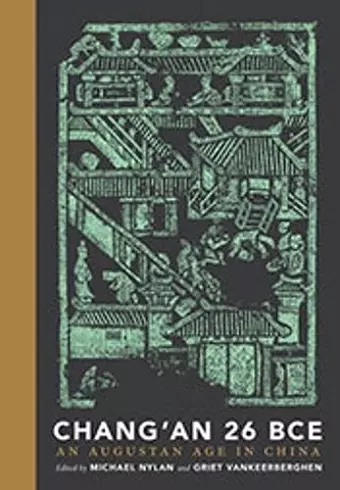Chang'an 26 BCE
An Augustan Age in China
Michael Nylan editor Griet Vankeerberghen editor
Format:Hardback
Publisher:University of Washington Press
Published:1st Dec '14
Currently unavailable, and unfortunately no date known when it will be back

A model of the way future research in the field should be done. All scholars who study early China, particularly those with an interest in the Han dynasty, will welcome this book as a major contribution to the field. -- Stephen W. Durrant, University of Oregon Tremendously valuable ... redefines how to look at an ancient Chinese city. Every historian of early China will find a treasure-trove of new and valuable information on the social, administrative, cultural, and ideological fabric of one of the most important cities of antiquity. -- Martin Kern, Princeton University
During the last two centuries BCE, the Western Han capital of Chang'an, near today's Xi'an in northwest China, outshone Augustan Rome in several ways while administering comparable numbers of imperial subjects and equally vast territories. This book deals with this topic.
During the last two centuries BCE, the Western Han capital of Chang'an, near today's Xi'an in northwest China, outshone Augustan Rome in several ways while administering comparable numbers of imperial subjects and equally vast territories. At its grandest, during the last fifty years or so before the collapse of the dynasty in 9 CE, Chang'an boasted imperial libraries with thousands of documents on bamboo and silk in a city nearly three times the size of Rome and nearly four times larger than Alexandria. Many reforms instituted in this capital in ate Western Han substantially shaped not only the institutions of the Eastern Han (25–220 CE) but also the rest of imperial China until 1911.
Although thousands of studies document imperial Rome's glory, until now no book-length work in a Western language has been devoted to Han Chang'an, the reign of Emperor Chengdi (whose accomplishments rival those of Augustus and Hadrian), or the city's impressive library project (26-6 BCE), which ultimately produced the first state-sponsored versions of many of the classics and masterworks that we hold in our hands today. Chang'an 26 BCE addresses this deficiency, using as a focal point the reign of Emperor Chengdi (r. 33–7 bce), specifically the year in which the imperial library project began. This in-depth survey by some of the world's best scholars, Chinese and Western, explores the built environment, sociopolitical transformations, and leading figures of Chang'an, making a strong case for the revision of historical assumptions about the two Han dynasties. A multidisciplinary volume representing a wealth of scholarly perspectives, the book draws on the established historical record and recent archaeological discoveries of thousands of tombs, building foundations, and remnants of walls and gates from Chang'an and its surrounding area.
"[A] landmark volume. . . . Equally significant as a contribution to Chinese studies and to the fields of urban and empire studies more broadly conceived, Chang'an 26 BCE is remarkable for its success in bringing together the work of Chinese and US scholars, and all in a series of very clear and engaging discussions of a wide range of topics. . . . It is an astounding achievement, as well as a beautifully illustrated object."
- Carla Nappi (New Books in East Asian StudISBN: 9780295994055
Dimensions: unknown
Weight: 1338g
656 pages